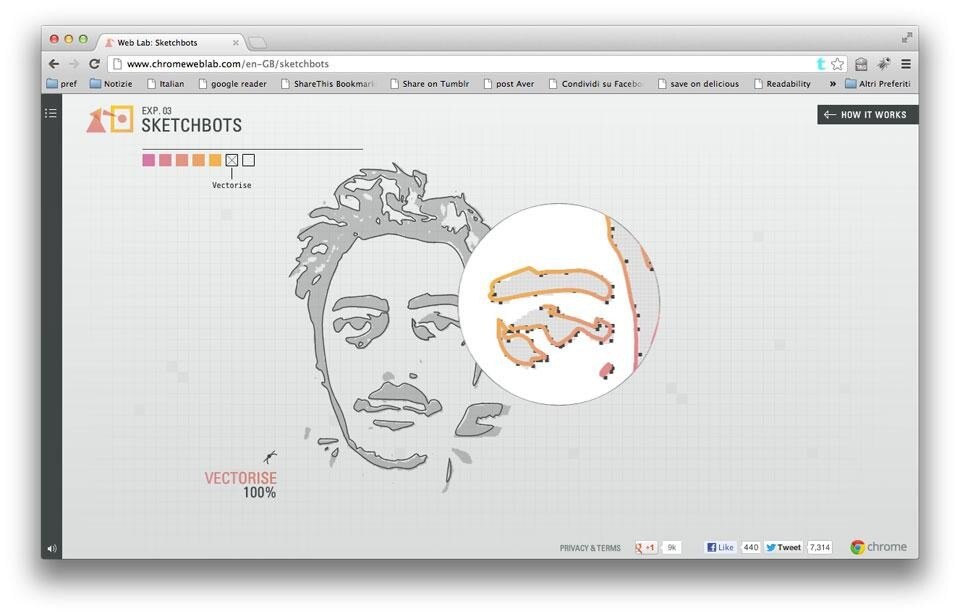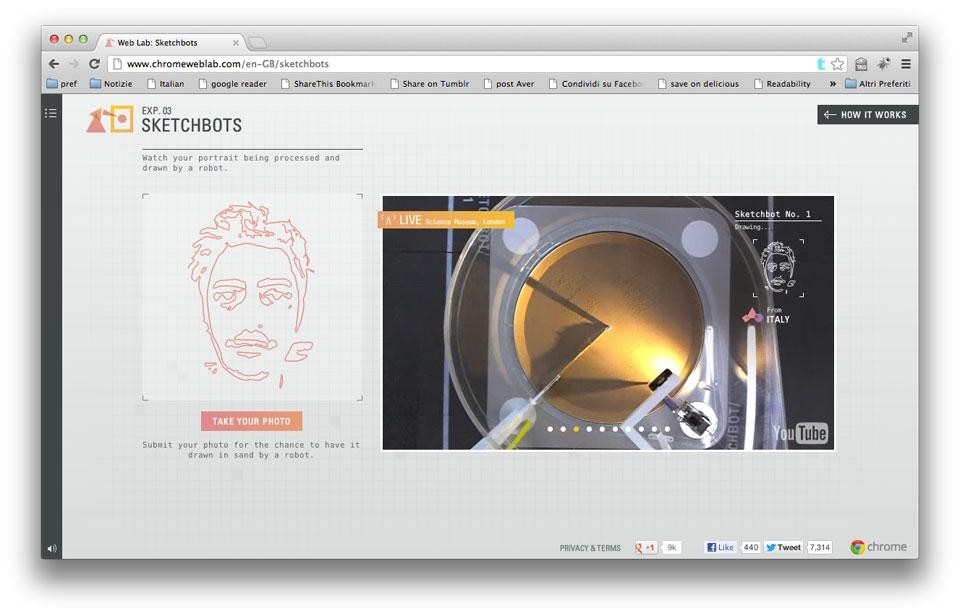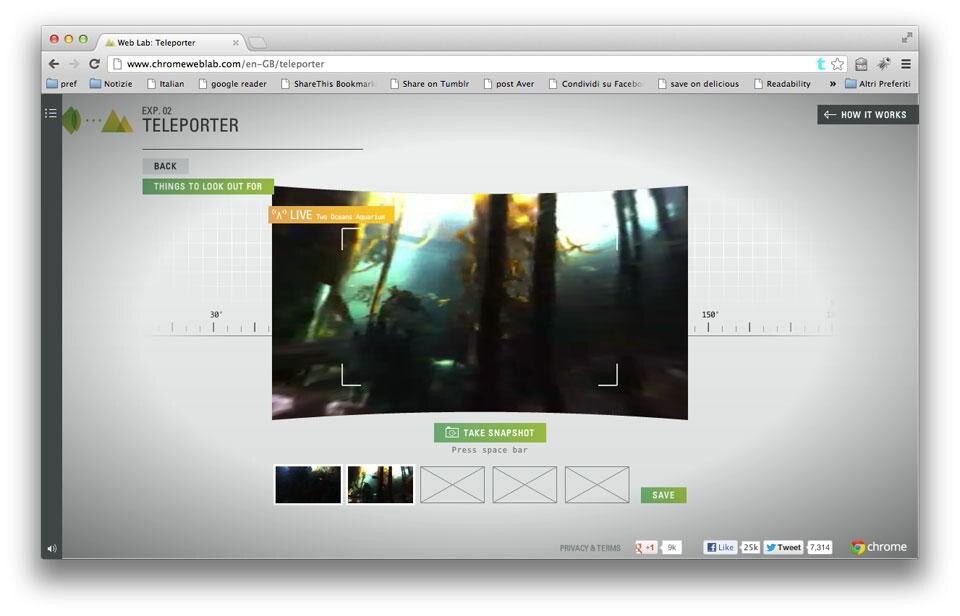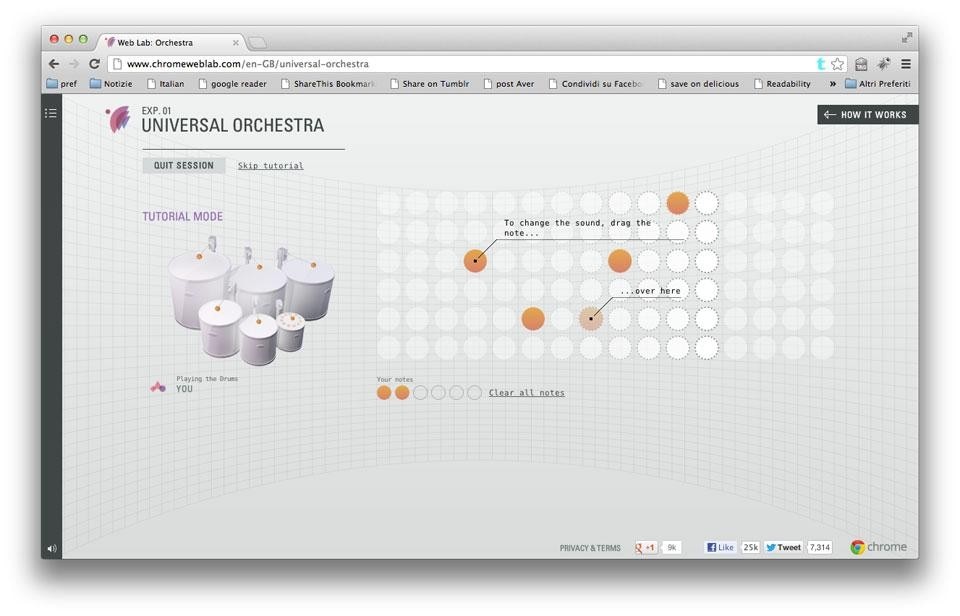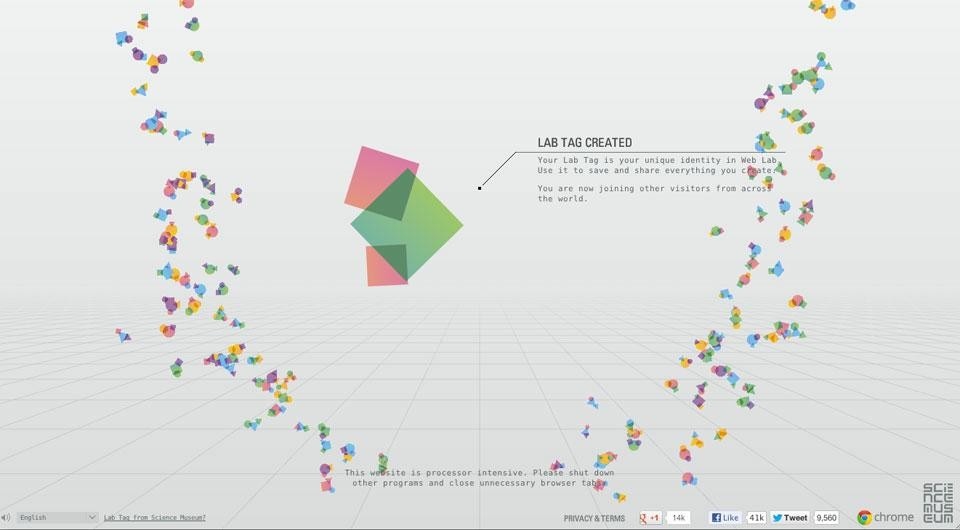It goes without saying that such a free and fragmented model is fertile terrain for research. You can set your sights high, make mistakes and choose impassable roads without putting the whole company at risk — only a small, independent cell.
In the design field, the full array of Google Chrome Experiments composes one of the most interesting of these cells. It is an open laboratory for the design of new browser features, where you can view 3D car models, draw faces, map world statistics, simulate liquids or do anything else you can imagine. Of course all of this is done with open technologies and no software, except for a browser or a mobile phone.
At the London Science Museum, this set of experiments has found a physical home. After an initial proposal by Google, the company and the museum worked together to shape Web Lab, an exhibition that materialises inside the museum's basement, as well as online. Since these experiments live inside monitors, it isn't easy to place them in physical space; so the simple — and correct — idea was to present five new prototypes exploring the relationship between reality and the web.
In real time, a CNC printer draws a face in the sand from a photo taken by a webcam somewhere in the world, as if it were right there. People from who knows where in the world can play an instrument together following a graphic score. The web's data flows appear on a map that looks as if it were the work of Koolhaas. Webcams all over the world look at strange places (including the model of an airport). And finally, a graph shows the hundreds of people who are interacting with the exhibition: each person represented by a bullet, a triangle, or a circle. Can we call these tiny dots "visitors"?
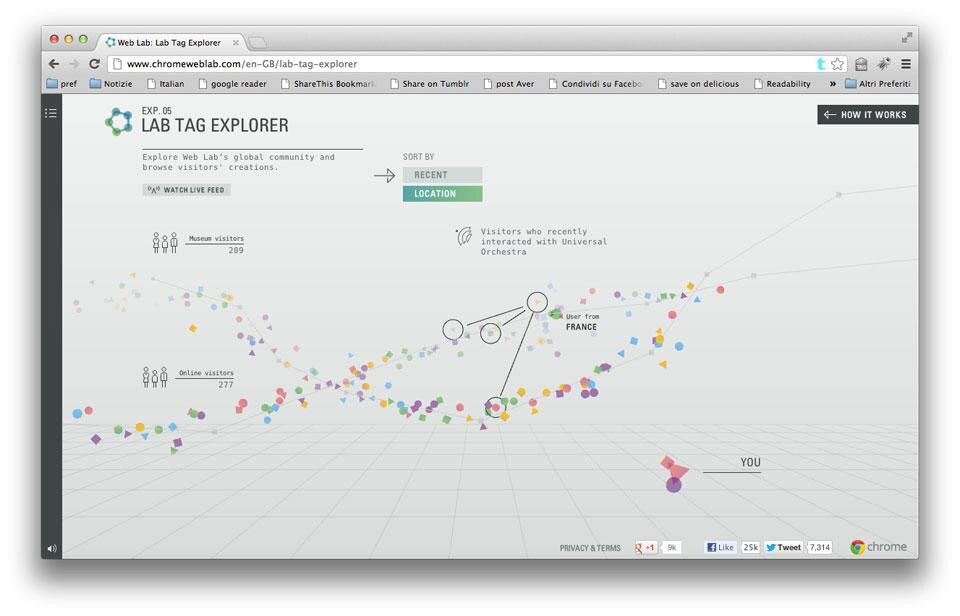
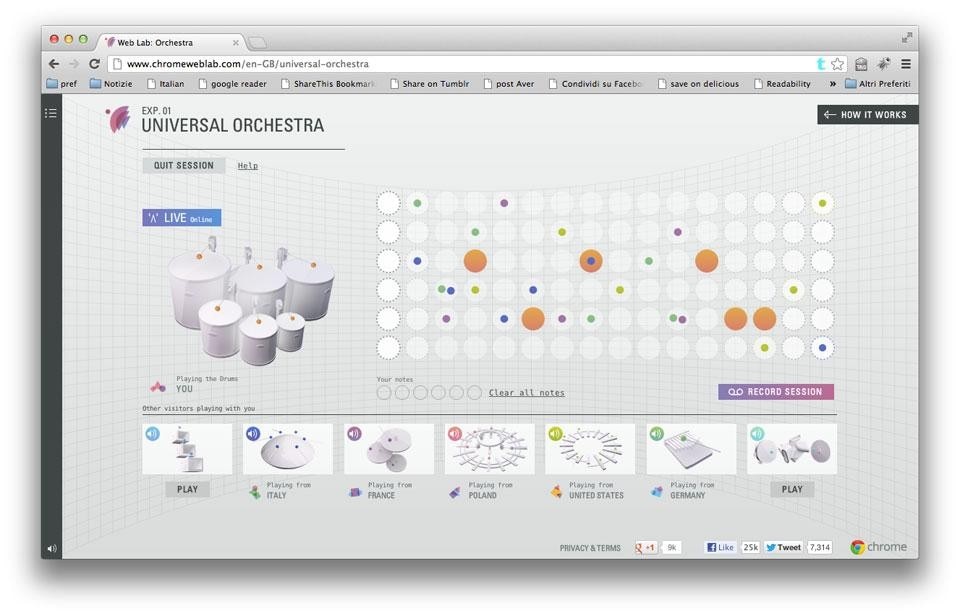
Except Google, of course. Roberto Marone (@roberto_marone)
The real catch is that the exhibition is not exactly in the Science Museum, because it can only exist when others create it from somewhere else
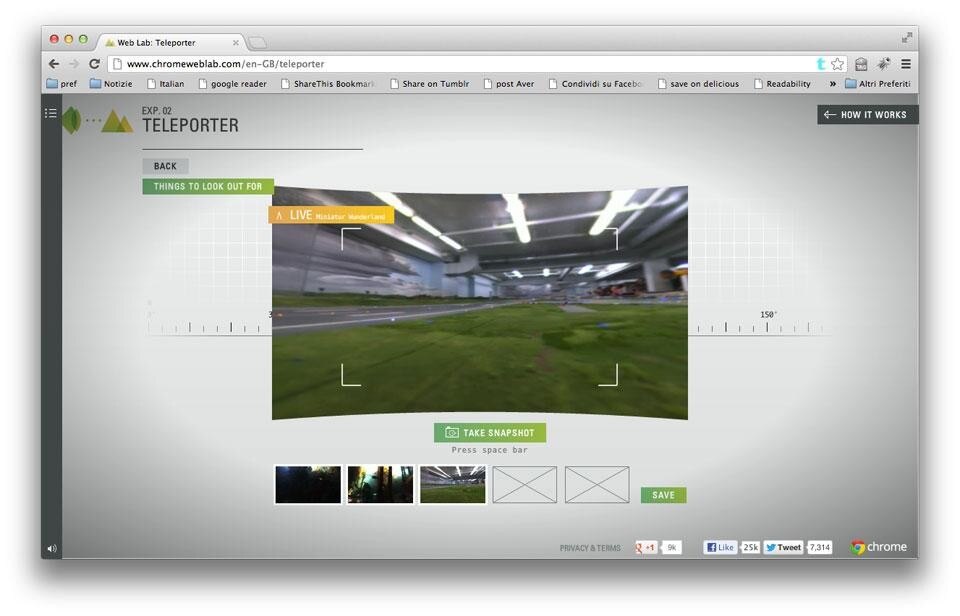
Web Lab
Science Museum
Exhibition Road, South Kensington, London
